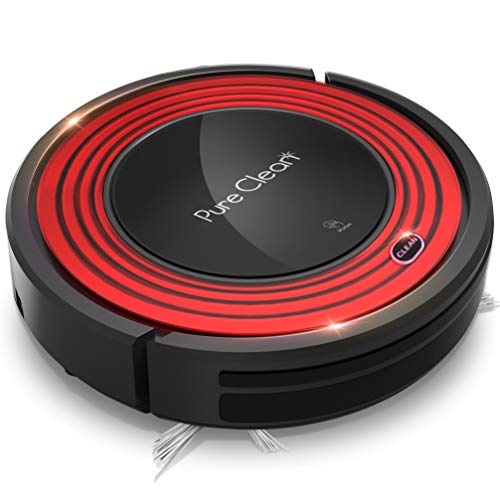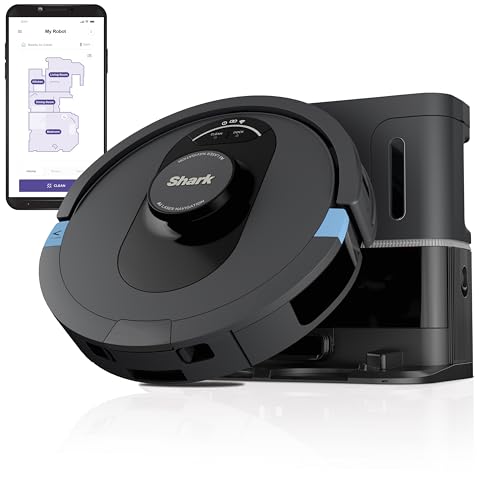14 Businesses Doing An Amazing Job At Robot Vacuum And Mops
페이지 정보
작성자 Antje 작성일24-05-28 18:55 조회11회 댓글0건관련링크
본문
 Robot Vacuum and Mop - Hands-Free Cleaning Made Easy
Robot Vacuum and Mop - Hands-Free Cleaning Made EasyIf you're interested in a cleaner that doesn't require hands to perform all of the tasks, think about this two-in-one robot. It vacuums low-pile and medium-pile floor carpets and the app allows you to create no-mop areas and to adjust cleaning modes and schedules.
Look for models that determine the kind of flooring they're using, remove their own water and dirt tanks and stay clear of obstacles such as socks, phone chargers and pet hair. Also, find out how easy it is to install.
Self-Emptying
As the world becomes busier and more hectic, people are always seeking ways to reduce their workload. Robot vacuums and Mopping Robot vacuum cleaner mop are among the top tools on the market to aid in this. They can clean up dirt, crumbs, and pet hair while simultaneously scrubbing and wiping floors clean. You can use your smartphone or voice assistants to control these machines by using pre-programmed routines and specific room designations.
Self-emptying models can be a huge time saver for both the user and the machine. It's not necessary to empty the trash bin each time you clean. This will help you save time and let your robot clean the entire house more often.
If you're thinking about self-emptying be sure that the external dustbin is large enough for your home size and cleaning frequency because it will fill up quickly if you opt to run it regularly. Also, you'll want to ensure that the system doesn't overfill and cause an obstruction that stops the robot from being able to empty it completely.
The self-emptying feature is a way of removing the dustbin from the machine, and placing it in a larger storage container. Imagine it as a bag on a vacuum cleaner. It is empty every two or three cycles. These robots are well worth the extra cost because they have this premium feature.
Some models wash and dry the dirty pads automatically after each use. Others have docks that does the work for you, and you only have empty it once or twice a year.
Check out this Roborock robot that is highly rated for its capability to perform both tasks. The RockDock-S7 MaxV Ultra can mop and vacuum, thanks to a an exclusive dock that handles all the maintenance for you. You don't need to empty the tanks manually and you can also schedule the unit to start using the on-device controls and voice assistants such as Alexa and Google Assistant. It even has boundaries to keep it out of certain zones if you don't want it roaming around your entire home.
Object Avoidance
The best robot vacuum for hardwood floors robot vacuums have the ability to avoid objects. This allows the machine to navigate around furniture leg and stray toys. This feature is crucial for families with pets and children, as the robot can jam or break when it comes into contact with them.
The system is usually built around a single pair of sensors that are located close to the shock-absorbing bumpers of the vacuum. Once the sensors detect an obstacle and the robot is able to detect it, it will turn and reorient itself until it can find a path that is clear. Some models use a technology called lidar which makes use of lasers to determine the distance between the robot and surrounding objects. This allows the robot to create a live map of its environment and allows it to move around your living space with more efficiency.
Other robovacs which don't employ lidar technology are designed to use binocular or monocular vision to recognize obstacles with cameras. These systems are most efficient in bright light but they don't perform as well in low light or with objects that have the same hue as the surroundings. For example, a robot that has monocular vision will have trouble seeing shoes or cables.
Certain robot vacuums are more sophisticated than others and can perform more than just avoid obstacles. This is why they are also called smart vacuums. They can create a virtual plan for your home and send them to specific areas or rooms via an app. They'll also remember where they've cleaned before, which can help reduce time spent cleaning and ensure your home is spotless.
Many of the most sophisticated robotic vacuums and mops are able to switch between different types of floors. Some robot vacuums and mops will automatically recognize the type of flooring in a specific room and adjust suction and brush functions in accordance with. Some will even switch from hard flooring to carpet without affecting suction power.
All smart vacuums and mop must feature some type of obstacle avoidance, regardless of the flooring type. These features ensure that the appliances don't ensnare themselves in an electrical wire web, which could cause them to lose suction. Some models are equipped with a list of objects they are aware to look out for, such as shoes, socks and pet waste. The most effective models can recognize these objects and determine their size and distance, and avoid them without crashing into them.
Floor Mapping
The majority of robot vacuums are fitted with sensors that detect objects. If a piece of furniture like furniture legs or a randomly tossed toy -- gets in the way, it triggers a sensor which tells the vacuum turn away from the obstacle and toward a cleaner part of the floor. The sensors aren't completely foolproof. The Roomba 900 Series, for instance, was able avoid our shoeslaces and headphones, but it accidentally sucked into cables. We recommend putting objects out of the robot's path prior to guiding through your home's rooms.
A lot of the mopping and vacuum robots we've tested on The Spruce come with an app that you can use to save maps, set schedules, select cleaning options and monitor the progress of your robot. The best apps offer features that make your robot more efficient. They are easy to use and simple to use.
App integration lets you keep the track of the water tank and dirty pads on your robot. Look for models that allow you to determine the level of water in the tank as well as the amount of wetness on the pad and when the pad's cloth should be changed. You can also program a schedule to will automatically change the pad when it's damp to keep mildewy smells out of building up on the old pad.
Mapping is an important feature for robot vacuums that operate across multiple floors of a house. It allows the robots to create an outline of your home that they can use to navigate and clean various areas. Some robots employ a combination of sensors and artificial intelligence to create these maps. For example, iRobot's Vacuuming Mapping feature makes use of multiple sensors to scan a room, including walls and corners, to determine how far it can go before hitting obstacles or hitting furniture.
Other robots, such as the Ecovacs Deebot X1 -OMNI or the Roborock S7 MaxV Ultra use optical sensors to determine the wall's location. They then employ an algorithm to map or follow the edges of furniture to figure out the most efficient way to travel through each room.
Mopping Sets
Robot vacuums operate on autopilot and you do nothing more than press an icon on a remote or an app to have them clean up a room. You can also set schedules using voice commands. This is an excellent feature for busy families who want their robot vacuum cleaners to complete their job at the exact same time each day.
Many robot mops come with microfibre pads, which are hydrated by water tanks located at the base. They are able to be used multiple times before they require to be cleaned or replaced. You should look for models that adjust the amount of water dispersed to fit different floor types. You'll also want to think about the dimensions of the tank, best Combo vacuum if you are able to change the cleaning mode between wet and dry mopping, and how long a robotic mop can last on one charge.
The Best Robot Vacuum Mop For Hardwood Floors robot mops are able to effectively and quickly clean floors, even under tables and around obstacles. While they're not perfect, they can struggle to climb the stairs or navigating ledges that connect rooms. They can leave streaks on timber or tiles especially in bright sunlight.
A robot vacuum and mop of high-quality should also come with a carpet sensor. This is crucial if your home has floors of different types and the robot will not be sucked into or over rugs. It should also be able to find other objects that could hinder the cleaning process, such as cords or tassels, and allow you to designate zones of no-go that block the robot from entering these areas.
The majority of robots that we test in our CHOICE lab are equipped with a smart app integration. This allows you to save your home's maps and set up cleaning schedules, and select cleaning modes. You can also set up virtual barriers to keep your robot out of certain areas and receive (sometimes humorous) warnings of errors when the device is having issues. Some apps are more user-friendly than others, and a few provide a live webcam for monitoring of your robot.

댓글목록
등록된 댓글이 없습니다.
